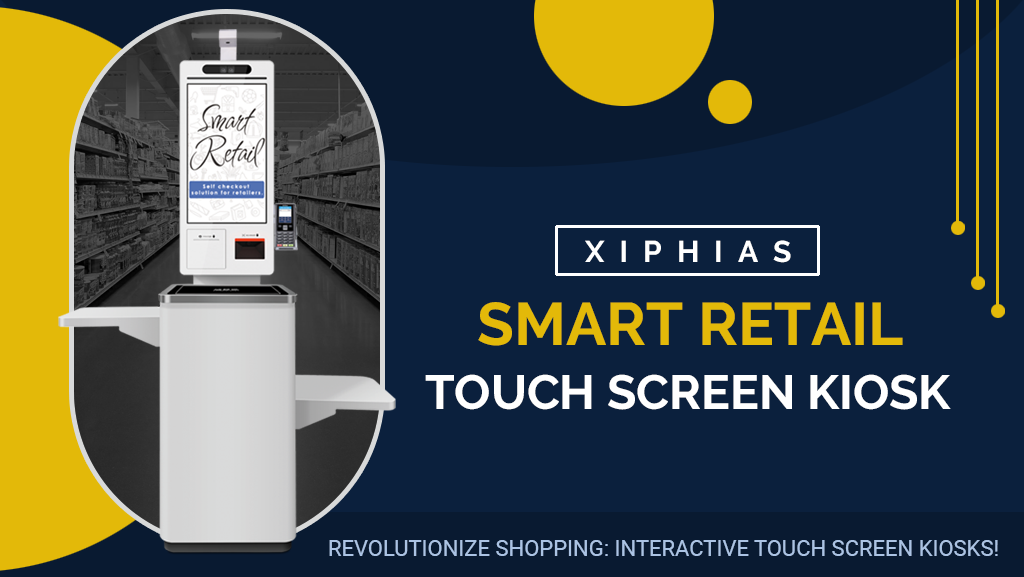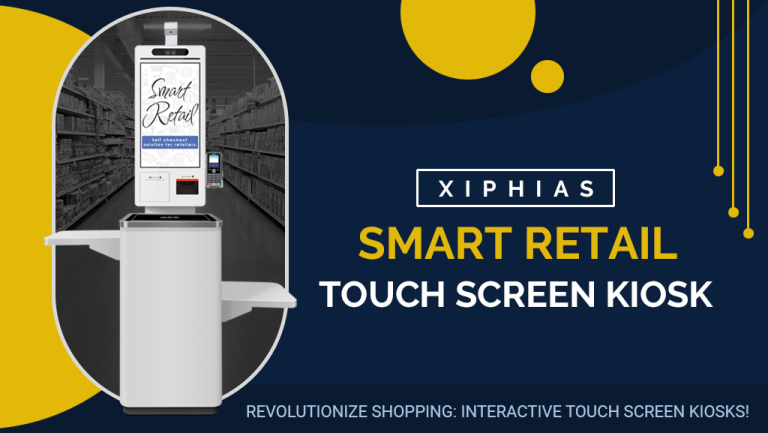Retail Touch Screen Kiosks: Boosting Sales and Customer Engagement
Retail touch screen kiosks are revolutionizing how businesses interact with customers and manage sales. These kiosks are increasingly becoming a vital tool in modern retail environments. With the ability to enhance customer experience, streamline operations, and boost sales, they offer numerous advantages to businesses looking to stay competitive. This blog explores how retail touch screen kiosks help in boosting sales and improving customer engagement.
1. Enhanced Customer Experience
Retail touch screen kiosks are designed to create a seamless shopping experience. They allow customers to quickly access product information, compare options, and even make purchases without waiting in long lines. By offering self-service options, retailers reduce frustration and provide more convenience. Shoppers can browse available products, check stock availability, and customize their orders, all from one interface. This freedom to navigate independently enhances customer satisfaction and encourages repeat visits.
Kiosks also empower customers with detailed product information, helping them make informed decisions. For instance, a customer shopping for electronics can compare specifications, read reviews, and explore different models on the spot. This instant access to information reduces the likelihood of returns and increases buyer confidence. When customers feel empowered, they are more likely to make a purchase, which directly impacts sales.
2. Increased Sales Opportunities
Retail touch screen kiosks provide excellent opportunities for upselling and cross-selling. These kiosks can be programmed to suggest complementary products based on a customer’s current selection. For example, a customer buying a smartphone can receive recommendations for protective cases, chargers, and accessories. This automated system introduces customers to products they might not have considered, driving additional revenue.
Additionally, kiosks can feature promotions, discounts, and flash sales in real-time, encouraging impulse purchases. Retailers can update offers quickly and target specific customer segments based on buying patterns. This ability to dynamically adjust sales strategies can significantly boost revenue, especially during high-traffic times such as holidays or promotional events.
3. Reduced Operational Costs
One of the significant advantages of touch screen kiosks is their ability to reduce staffing needs. Kiosks handle many routine tasks such as answering common questions, assisting with purchases, and even processing returns. This allows retailers to allocate their staff to more critical areas, such as customer service or product management. While kiosks take care of the repetitive tasks, human employees can focus on providing personalized service.
Automating certain functions through kiosks also reduces the potential for human error. For example, customers can enter their payment information directly, eliminating the risk of miscommunication between the customer and the cashier. This accuracy not only improves customer satisfaction but also saves time and reduces costs associated with processing errors.
4. Improved Customer Engagement
Retail touch screen kiosks are excellent tools for engaging customers in innovative ways. They can display interactive content, such as videos, tutorials, or even virtual product demos. These features allow customers to explore products in-depth without requiring assistance from sales staff. Interactive content keeps customers engaged for longer periods, increasing the likelihood of a purchase.
Additionally, kiosks can offer personalized experiences by integrating with customer loyalty programs. When a customer logs into their loyalty account through the kiosk, they can receive tailored recommendations based on their previous purchases. Personalized suggestions foster a sense of connection between the customer and the brand, strengthening brand loyalty. Engaged customers are more likely to return, leading to increased sales over time.
5. Faster Checkout and Reduced Wait Times
Long checkout lines are a common frustration for many shoppers. Retail touch screen kiosks solve this problem by offering a self-checkout option. Customers can quickly scan their items, process payments, and bag their purchases, all without needing assistance. This reduces congestion at traditional checkouts, speeds up the payment process, and enhances the overall shopping experience.
Self-checkout kiosks are especially beneficial during peak shopping hours or holiday seasons when stores experience higher foot traffic. By providing additional points of sale, retailers can reduce bottlenecks, ensuring that customers have a smooth and enjoyable shopping experience. A faster checkout process also encourages more purchases since customers won’t abandon their carts due to long lines.
6. Data Collection and Insights
Retail touch screen kiosks provide valuable data that can be used to enhance business strategies. Every interaction with a kiosk generates data, such as which products customers are searching for, what they’re purchasing, and how often they use the kiosk. Retailers can analyze this data to better understand customer preferences, buying behavior, and sales trends.
This information helps businesses make informed decisions about inventory management, marketing strategies, and customer service improvements. For example, if a retailer notices that certain products are frequently searched but rarely purchased, they can adjust pricing, offer promotions, or review product placement. With these insights, retailers can continuously refine their approach to meet customer needs, leading to increased sales and higher customer satisfaction.
7. Brand Image and Innovation
Using touch screen kiosks in retail settings positions a brand as forward-thinking and customer-centric. In a world where technology plays a key role in daily life, businesses that adopt the latest innovations are seen as leaders in their industry. Retail kiosks not only modernize the shopping experience but also show that the brand is willing to invest in tools that prioritize customer convenience.
Kiosks provide a consistent, high-quality shopping experience that enhances the brand’s image. Whether customers are using a kiosk to check out, learn about products, or participate in promotions, they associate the brand with efficiency and modernity. This positive perception can lead to greater customer loyalty and, ultimately, increased sales.
8. Integration with Omnichannel Retailing
Retail touch screen kiosks can seamlessly integrate with an omnichannel retail strategy. For instance, customers who prefer shopping online can use in-store kiosks to pick up or return online purchases. This flexibility strengthens the connection between the retailer’s physical and digital presence. Customers benefit from the convenience of being able to interact with the brand across multiple platforms.
Additionally, kiosks can be used for in-store promotions that complement the retailer’s online campaigns. A synchronized approach between the digital and physical store ensures customers enjoy a consistent experience, which drives engagement and boosts sales. By bridging the gap between in-store and online shopping, kiosks help retailers cater to a wide range of customer preferences.
Conclusion
Retail touch screen kiosks are key to boosting sales and improving customer engagement. These versatile tools enhance the customer experience, increase operational efficiency, and provide valuable data insights that businesses can use to refine their strategies. By integrating kiosks into their operations, retailers can stay competitive, streamline processes, and create a more enjoyable shopping environment. As more consumers seek convenience and interactivity, the demand for retail touch screen kiosks will continue to grow, offering endless opportunities for business growth.


